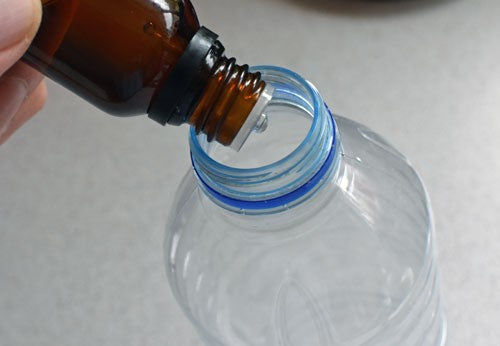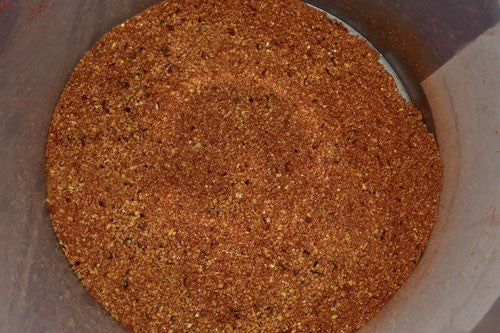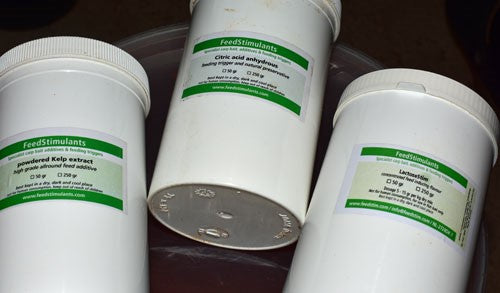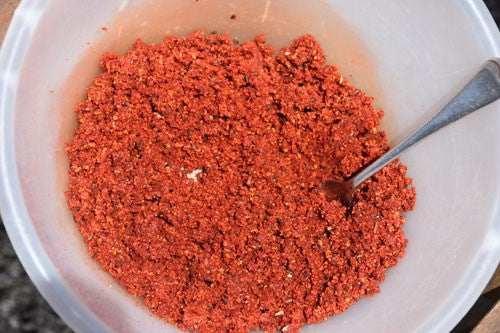
The New Robin Red (UK/EU) Part Two: Updates and Insights
Share
As I have detailed before in these carp fishing blogs, you can increase the shelf life of the carp baits we made in part 1, by using Glycerin. At the same time, you can boost the flavour attraction by adding your preferred flavour to the Glycerin itself.

You will recall that I used the well-proven combo of Plum with Caproic acid? Here's how to make a bespoke Glycerin glug using the flavours of your choice. Plum & Caproic was first offered on a commercial basis by Nutrabaits way back in the day, and it is a combination I have used to significant effect down the years.

This time I shall be using John Bakers amazingly powerful Plum flavour, but I am staying true to my Nutrabaits roots by using their Caproic Acid.

First, you will need a mixing bottle. I use old water bottles saved from the recycling bin! To make the glug, first, add to the container 12 drops (half a ml) of Caproic Acid.

Here's the flavour I will be using to boost the attraction of the glug still further. John kindly supplied the syringe when I bought the flavour from him. It is so strong that John recommends no more than 1ml to six eggs!

Add the flavour to the mixing bottle.

Now add 50ml of Glycerin.

Shake the bottle to blend the component liquids. Then pour the solution over the baits while they're placed in a bowl.

Give the baits a good stir to ensure each one is well coated with the glug and then finally sprinkle over them some neat Robin Red (UK/EU). This culture will disperse around the bait carpet, giving a myriad of tiny food particles. While the contents of the new Robins are not soluble, they can be detected via the carp's taste organs, and we already know just how much carp love the taste of Robin Red!

Now I would like to show you how to make a high-attract paste using the latest version of Robin Red (UK/EU). I have written at length about paste baits in my carp blogs, so just in case you have not read them, these are the advantages pastes have over boiled baits:
• No hard outer skin so digestibility is improved. Similarly, the lack of skin allows the attraction (smell and taste) to leak out more quickly.
• Easy to prepare at the lakeside or in a home kitchen.
• Can be used as a lead or hook bait wrap (see photo).
• Can be made using either eggs or water. The water-based paste will breakdown quicker, releasing a flood of attraction. The egg-based paste is slower to break down, and the appeal is released progressively.

I am going to create a water-based paste using three Haith's Baits ingredients, Red Factor, CLO and Robin Red . First, measure out by weight 200g each Red Factor and CLO.

Now weigh out 100g of the new 100% Natural Robin Red (UK/EU).

Place all the dry ingredients in a durable polybag or better still a clean, dry bucket and then shake the ingredients together vigorously to form the basic paste mix.

I also want to give the paste a slow-release boost using these powder attractors. LactoseStim is an intense sweetener, very much like the old Nutrabaits' Cajoler. It contains three chemicals that are known to attract carp, namely vanillin, ethyl lactate and butyl lactate. Kelp Extract has been used in carp baits for over thirty years and with good reason as it is very rich in minerals, trace metals, amino acids and carbohydrates. Finally, I am going to use a tiny amount of Citric Acid, which is widely accepted as an investigation trigger. These powders are added to the bucket and blended in as before. I intend to create both an egg-based paste and a water-based one, so I start by dividing the dry powders into two lots of 250g each.

Citric acid is powerful, and too much will overload the attraction. I use 1g/kg and find that it is ample.

Kelp powder is detected by the carps' taste receptors and is an excellent nutritional element in any base mix, paste mix of ground bait as is very rich in minerals, trace metals, amino acids and carbohydrates. You don't need a lot of it; perhaps 5-10g should do the trick.

I am going to use a mixture of Coca-Cola and water to bind the paste. I am told that Coke contains Taurine, an amino acid that carp are supposed to like. Whether that is true or not, I don't know; what I do know is that I am quite happy to use it for its sweet taste as much as anything else. In a pan, I warm a 50/50 solution of Coke and water before adding some sugar which dissolves readily in the heat. The result is a thick tar-like goo that tastes divine and adds still further to the overall attraction.

In a mixing bowl, use a fork to bring together 250g of the dry powders and the liquids. You will note that the mix will bind readily and can then be used in several different ways.

If you have been following these blogs, you will note that I have made frequent mention of using paste wrapped around the lead. I use this Paste Bomb from Fox, which allows method mixes or pastes to be moulded around the lead while retaining the camouflage and hooking advantages of a lead over a method feeder.

You can see how easy it is to mould the Coke & water-based paste around the bomb.
These next two photos demonstrate the primary advantage of using a water-based paste. In the first, you can see a ball of paste that I have made up using the Robin Red & Chilli base mix I usually use to create boilies. However, due to the nature of the blend, it binds readily with both eggs and water. Here is a small ball of the paste that is beginning to break down after about five minutes in the water…


…and here is that same paste after 30 minutes. As you can see, all that remains are the insoluble particles of paste. The solubles have leaked out of the paste to spread their attraction in the zone around the hook bait.

So imagine how vast your attractor-infused bait carpet will be once you have fired out, say, fifty little paste balls of attraction around your swim.

Pastes made with eggs do not break down as quickly as those made with eggs, so it is a good idea to create a separate paste using the remaining 250g of dry powders and liquid attractors blended with eggs. First, break three eggs into a bowl and add your liquid attractors.

I am using a whisk or a fork blend together the eggs and the liquid attraction. (The fork in my photo has mixed thousands of boilie pastes over the forty-five years that I have been making my bait. It is my talisman, my lucky charm, and I am sure it brings a magical quality to any bait that I make!)

Bag up the finished pastes and if you don't intend to use them right away, then pop them into the freezer.

Use a 50/50 mix of both egg- and water-based paste balls to create a continuously evolving carpet of attraction across the baited area. Any decent hookbait fished over the top of all that attraction is sure to bring success!

I have been using Haith's products for nearly fifty years, and in that time, I have caught many carp on baits containing them. Here's one I caught earlier… a lot earlier!
Written by Ken Townley
